It is probably the most beautiful and unique house in Barcelona. The colours and design of the façade transport you to a fantasy world inspired by the sea and waves. No matter what time of day, thousands of people stop to admire the view each day. On very special days of the year, it is also festively decorated with roses or illuminated at night with light installations. We are talking about Gaudi’s masterpiece Casa Battló. Nestled in the heart of Barcelona’s elegant Passeig de Gràcia, Casa Batlló stands as a testament to Antoni Gaudí‘s unparalleled genius.
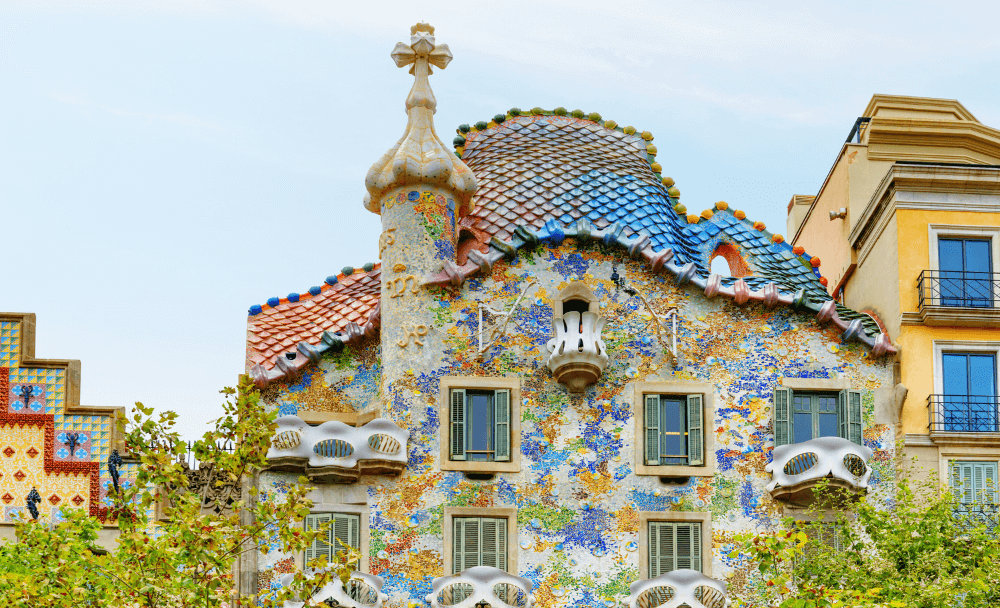
Casa Batlló is a UNESCO World Heritage Site since 2005 and a Spanish Cultural Heritage site, designed by Antoni Gaudí.
The building is a testament to modernist architecture and artistic innovation in Barcelona’s Paseo de Gracia.
Passeig de Gràcia is practically unique in the world: two buildings on the same street have been declared UNESCO World Heritage Sites: Casa Batlló and Casa Milà.
Casa Batlló is a must-visit attraction for architecture and design lovers, history buffs, and fans of Gaudí’s work.
Gaudí combined stone, glass, ceramics and iron to create a unique façade that produces a magical play of light and shade in the sunlight.
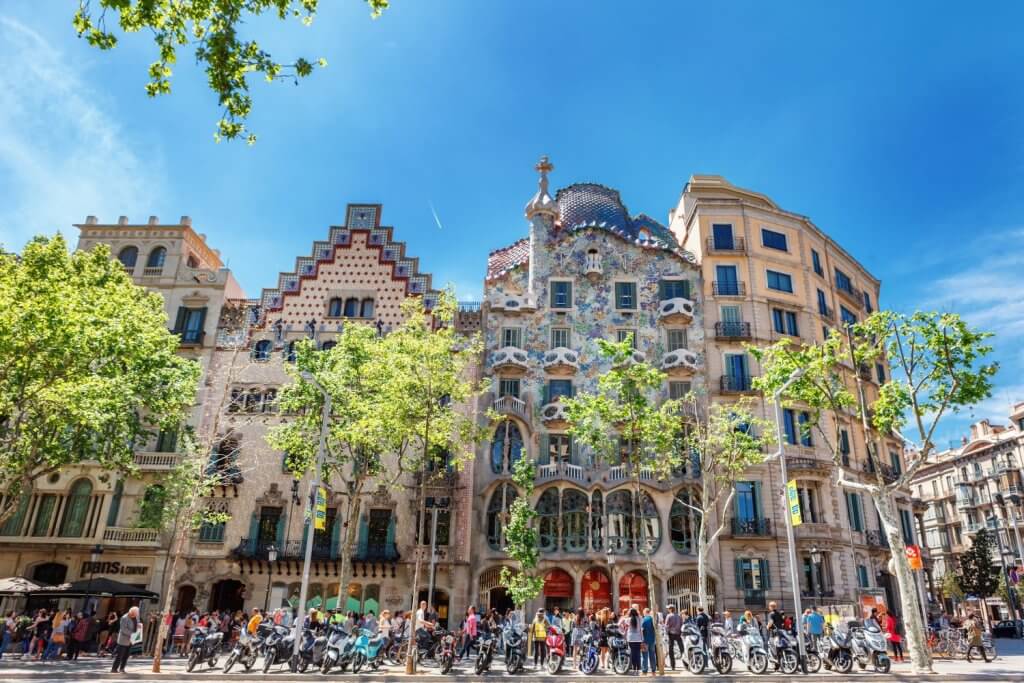
The history of Casa Batlló begins in 1877, when it was originally built by Emilio Sala Cortés, one of Gaudí’s architecture professors. However, it was not until 1904 that it was transformed into the iconic structure we see today. Josep Batlló, a well-known textile industrialist, purchased the building in 1903 and granted Gaudí complete creative freedom to renovate it. Gaudí transformed the house into Casa Batlló as we know it today, adding a double courtyard and enlarging the atrium. The main apartment became the Noble Hall, where the Batlló family resided.
Casa Batllo is now an important part of Barcelona’s iconic landscape and showcases Gaudí’s architectural genius. In 1993, the current owners bought Casa Batlló and carried out extensive renovations, especially after it was declared a UNESCO World Heritage Site.
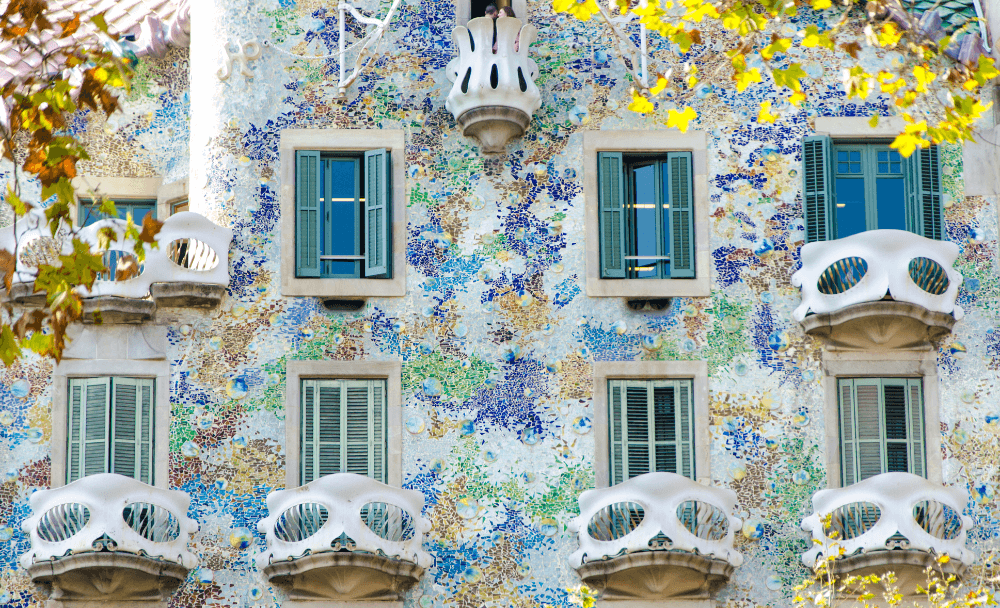
The extraordinary Casa Batlló façade, resembling a wild painting of blue, green, and purple trencadís tilework, often compared to Claude Monet’s Water Lilies. Locally known as the “Casa dels ossos” (House of Bones) due to its slender stone window columns and wavy mask-shaped balconies, the building stands out in Barcelona.
Inside, the design blends modernist and Mediterranean styles, incorporating elements such as wrought iron, wood, and stained glass in perfect harmony. The core of the house is the patio of lights, which employs innovative technical and design solutions to distribute air and light throughout the building.
Gaudí’s redesign of Casa Batlló celebrates organic forms and vibrant hues. The façade features undulating stone work, fragments of colorful ceramics, and glass that shimmers in the sunlight. Among its most striking features are the bone-like columns on the lower floors adorned with modernist floral elements, the mask-shaped iron balconies that protrude outward, and a roof that resembles the scaled back of a dragon, topped by a four-armed cross.
Inside, everything is curved, creating a sense of flow and movement throughout the space. The attention to detail is astounding, evident in uniquely designed door handles and intricate ceiling work.
To make the most of your visit to this UNESCO World Heritage site, consider these tips:
Casa Batlló is open daily from 9am to 8pm, with tickets available online or at the door.
Book your tickets in advance online to save money and avoid long queues. Gold ticket holders can access all rooms.
Opt for an early morning (8:30 AM) or late afternoon visit for smaller crowds
Allow at least 60-90 minutes for your visit to fully appreciate the details
The multimedia guide is available in 15 languages and provides audio explanations, videos, music, and augmented reality.
At the end of your visit, don’t miss the majestic descent to the House’s basement, designed by the internationally renowned Japanese architect Kengo Kuma and the Gaudí Cube by new media artist Refik Anadol which takes you on a journey into Gaudí’s mind in a groundbreaking 360º experience.
One ticket that gives you access to all the top attractions, with no queues and at reduced prices
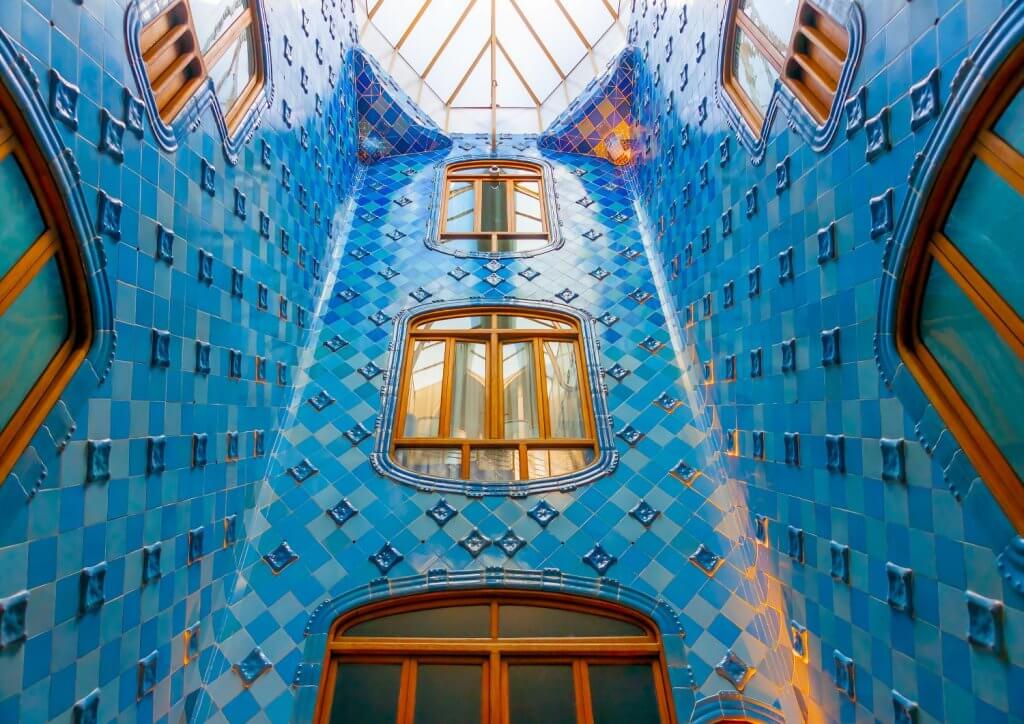
The ground floor of Casa Batlló is a masterpiece of design, thanks to the collaboration with excellent architects and craftsmen of the time. The interior is decorated with wrought iron, wood, stained glass, ceramic tiles and stone ornaments. The windows of each landing distort the tiles of the atrium, transforming them into water ripples.
The entrance hall is a stunning example of Gaudí’s use of natural light. The hall features vaulted walls and ceilingand skylights shaped like turtle shells. The entrance hall also features a beautiful glass painting window that captures light and adds to the overall atmosphere of the room.
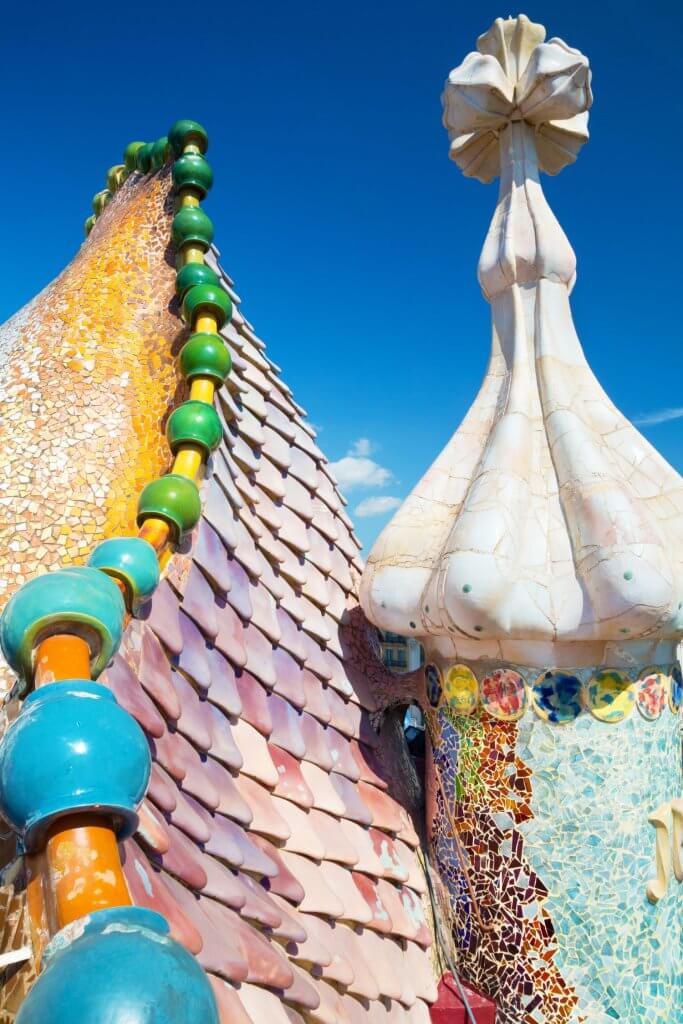
The main salon on the 1st floor features wave-like wooden windows adorned with mollusk-shaped stained glass, stretching across the length of the room.
One of the most notable features of the upper floors is the use of ceramic tiles. The tiles are used throughout the floors to create a sense of continuity and flow. The tiles are also used to create intricate designs and patterns, adding to the overall beauty of the space.
The roof of Casa Batlló is a unique attraction in itself and offers a view of Barcelona and Gaudí’s trencadís mosaic fireplaces.
There are 60 hyperbolic arches on the roof, which are typical of Gaudí’s work and resemble the ribcage of an animal. The roof terrace is also home to the famous dragon back, which extends along the facade covered in colourful tiles.
Here you can enjoy breathtaking views of Barcelona and relax and enjoy. The roof terrace hosts several events and exhibitions throughout the year, making it a great place for those interested in art and culture.
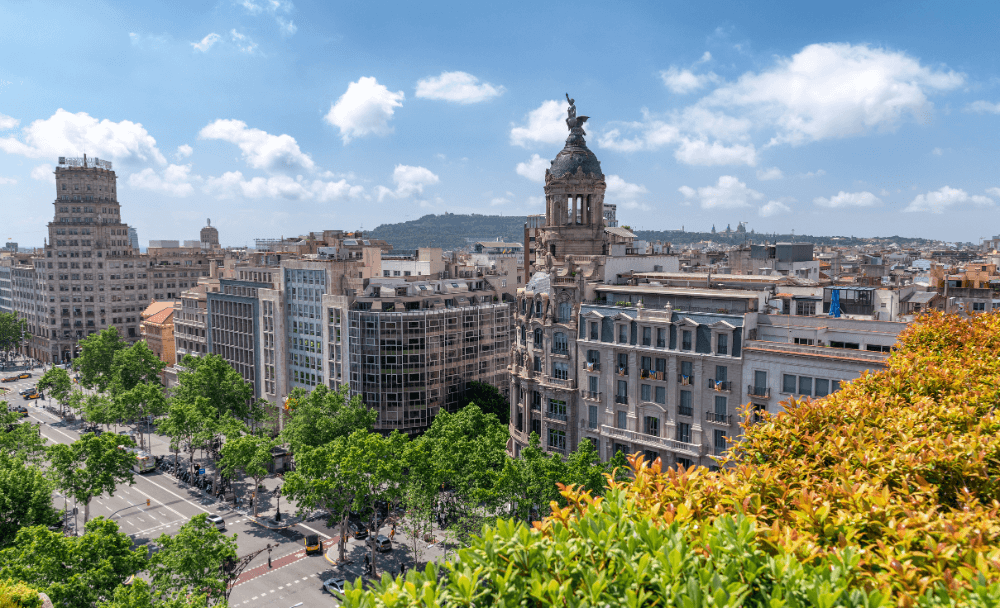
The building is often referred to as the “House of Bones” or the “House of the Dragon” due to its skeletal-like façade and dragon-inspired roof.
Salvador Dalí, another Catalan genius, interpreted the façade as being inspired by the shapes of the sea, comparing it to Monet’s Water Lilies.
The current owners (Bernat family) of Casa Batlló bought the house in 1993, and they also own the famous Chupa Chups candy company.
Despite its fantastical appearance, Casa Batlló is highly functional, incorporating innovative features that were ahead of its time.
Gaudí worked on the façade from the outside, without specific plans, allowing his creativity to flow freely.
Casa Batlló is more than just a building; it’s a portal into Gaudí’s imagination. As you stand before its whimsical façade or wander through its dream-like interiors, you’ll understand why this masterpiece continues to captivate millions of visitors each year. Whether you’re an architecture enthusiast or simply someone who appreciates beauty, Casa Batlló promises an unforgettable experience in the heart of Barcelona.
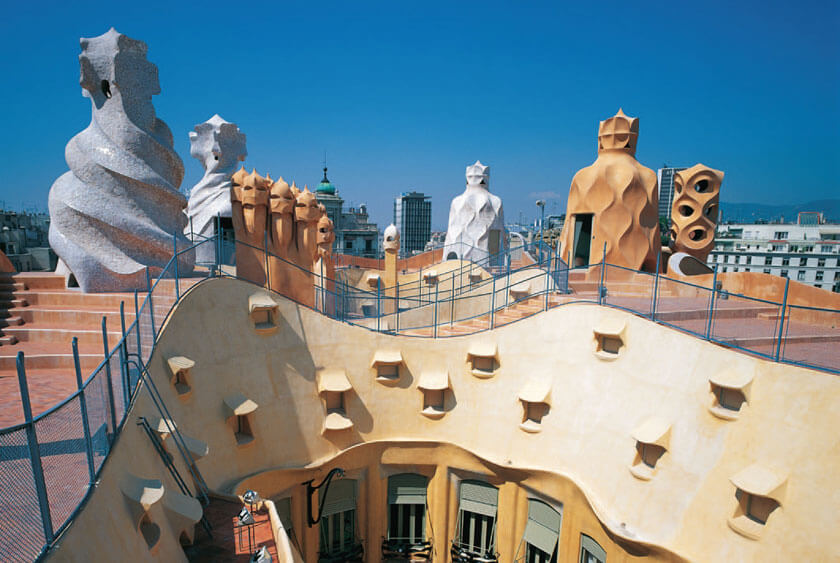
Casa Amatller is a gorgeous historic house right next to Casa Batlló, and can be visited on the same day.
Casa Milà, also known as La Pedrera, is Antoni Gaudí’s iconic modernist masterpiece in Barcelona, featuring an undulating stone façade, twisted wrought iron balconies, and a spectacular rooftop with sculptural chimneys, embodying the architect’s organic and innovative design philosoph.
Passeig de Gracia is one of the most expensive streets in Barcelona and Spain, and features other modernist architecture gems.
The Mansana de la Discòrdia (Block of Discord) is a famous block of buildings that includes Casa Batlló, Casa Amatller, and Casa Lleó Morera.
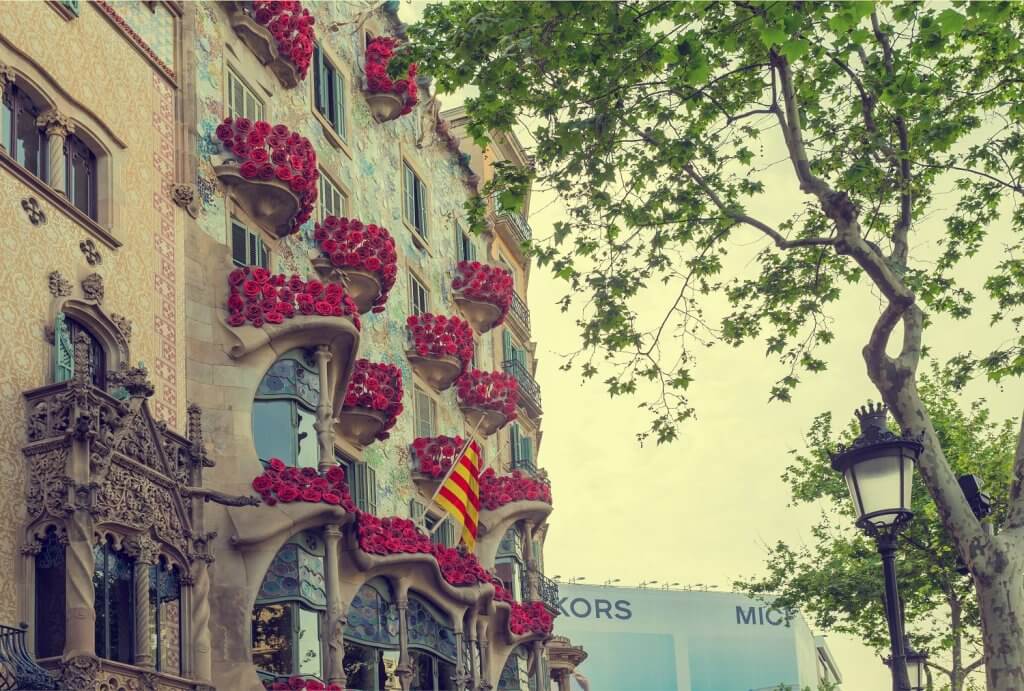
Casa Batlló is one of Antoni Gaudí’s most iconic and unique buildings in Barcelona, with several features that distinguish it from his other works:
Facade design: Casa Batlló’s facade is particularly striking, featuring an undulating stone facade, colorful mosaic made of broken ceramic tiles (trencadís), and bone-like columns. This organic, mediterranean influence design is more elaborate than some of Gaudí’s other buildings.
Dragon roof: The arched roof of Casa Batlló is often likened to the back of a dragon or dinosaur, with large scales and a cross-topped turret representing the lance of Saint George. This fantastical element is unique among Gaudí’s works.
Interior light well: Casa Batlló features an innovative central light well that widens at the top to allow more natural light to penetrate the building. This demonstrates Gaudí’s focus on functional biomimicry.
Noble floor: The main floor of Casa Batlló is particularly spacious and elaborately decorated, featuring mushroom-shaped fireplaces and intricate animal-like decor.
UNESCO World Heritage status: Like several other Gaudí buildings in Barcelona (Parque Güell, Palacio Güell, Casa Mila, Casa Vicens, Sagrada Familia), Casa Batlló is part of the UNESCO World Heritage Site “Works of Antoni Gaudí”.
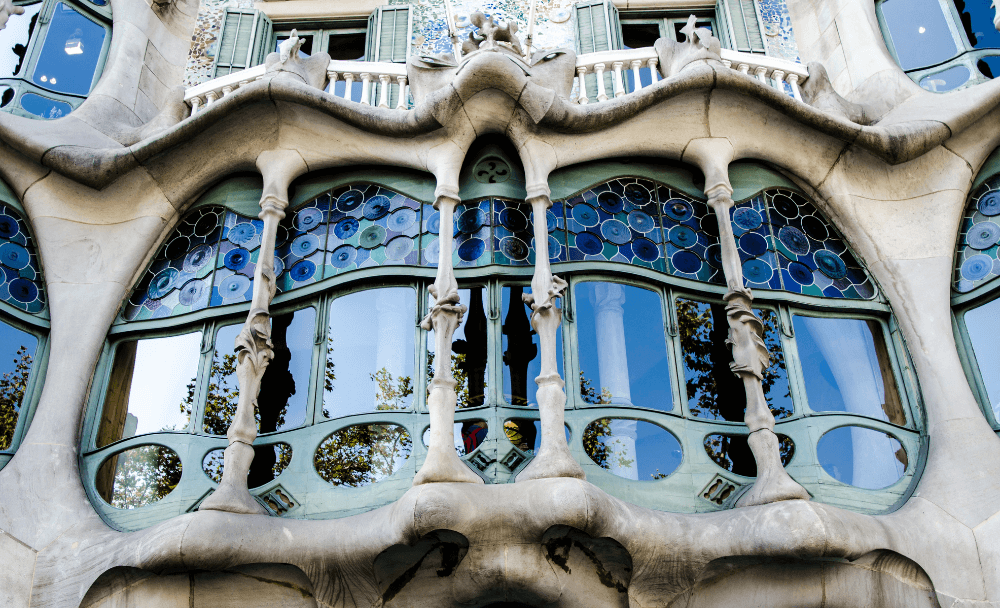
Definitely yes! Casa Batlló is an essential destination for anyone interested in architecture, design, and history, showcasing a unique design and stunning façade that make it a standout attraction in Barcelona. The building’s innovative conservation techniques have successfully preserved its original charm and character, allowing visitors to appreciate its rich history and cultural significance. With its artistic value and functional design, Casa Batlló embodies the essence of modernism and is a must-visit for those wishing to explore Gaudí’s genius.